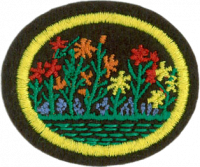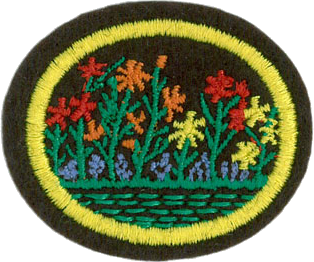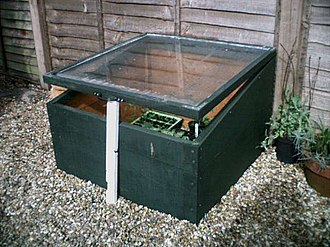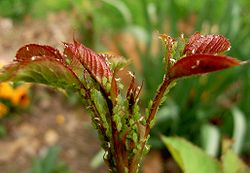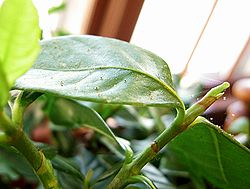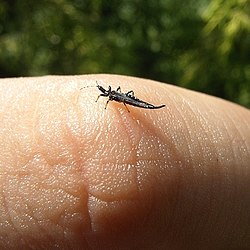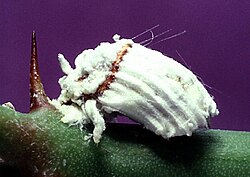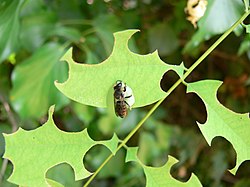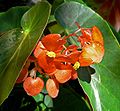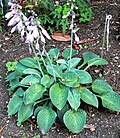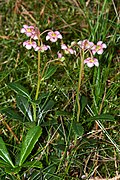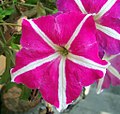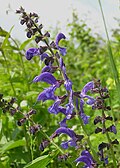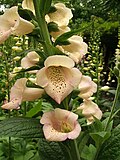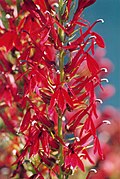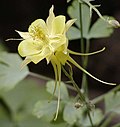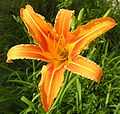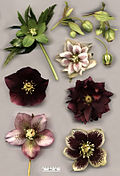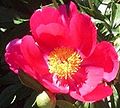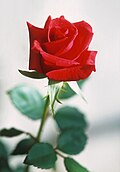AY Honor Flower Culture Answer Key
1
1a
A perennial is a plant that lives for more than two years. Perennial plants are divided into two large groups, those that are woody and those that are herbaceous. All woody plants are perennials since they form woody tissue that persists from one year to the next. Woody perennials develop a woody base or root system from which the foliage and flower stems grow year after year while the plant is alive. In common usage the term perennial generally describes herbaceous perennials.
1b
Annuals die each year. Depending on your climate annuals may be for summer planting (in snow regions) or winter planting (in low deserts). These plants produce many flowers and seeds in their life cycle to help perpetuate them. As a result many annuals seem to grow back each year when it is more likely a new plant from a seed has grown in its place.
1c
Biennials are plants that live for two years. They generally take on different forms in each of these years, producing seeds only in the second year.
2
Hotbed
A hotbed is a pile of decaying organic matter warmer than its surroundings due to the heat given off by the metabolism of the microorganisms in the decomposing pile. Hotbeds are used for composting and keeping delicate plants warm during the winter.
Cold Frame
In agriculture and gardening, a cold frame is a transparent-roofed enclosure, built low to the ground, used to protect plants from cold weather. The transparent top admits sunlight and relies on the greenhouse effect to reflect back radiant heat that would otherwise escape at night. Essentially, a cold frame functions as a miniature greenhouse season extension device.
Cold frames are found in home gardens and in vegetable farming. They create microclimates that provide several degrees of air and soil temperature insulation, and shelter from wind. In cold-winter regions, these characteristics allow plants to be started earlier in the spring, and to survive longer into the fall and winter. They are most often used for growing seedlings that are later transplanted into open ground, and can also be a permanent home to cold-hardy vegetables grown for autumn and winter harvest.
Cold frame construction is a common home or farm building project, although kits and commercial systems are available. A traditional plan makes use of old glass windows: a wooden frame is built 30-60 cm![]() , and the window placed on top. The roof is often sloped towards the winter sun to capture more light, and to improve runoff of water, and hinged for easy access. Clear plastic, rigid or sheeting, can be used in place of glass. An electric heating cable, available for this purpose, can be placed in the soil to provide additional heat.
, and the window placed on top. The roof is often sloped towards the winter sun to capture more light, and to improve runoff of water, and hinged for easy access. Clear plastic, rigid or sheeting, can be used in place of glass. An electric heating cable, available for this purpose, can be placed in the soil to provide additional heat.
3
Drainage is the natural or artificial removal of surface and sub-surface water from a given area. Many agricultural soils need drainage to improve production or to manage water supplies.
In moist climates, soils may be adequate for cropping with the exception that they become waterlogged for brief periods each year, from snow melt or from heavy rains. Soils that are predominantly clay will pass water very slowly downward, meanwhile plant roots suffocate because the excessive water around the roots eliminates air movement through the soil. Other soils may have an impervious layer of mineralized soil, called a hardpan or relatively impervious rock layers may underlie shallow soils. Drainage is especially important in tree fruit production. Soils that are otherwise excellent may be waterlogged for a week of the year, which is sufficient to kill fruit trees and cost the productivity of the land until replacements can be established. In each of these cases appropriate drainage is used to carry off temporary flushes of water to prevent damage to annual or perennial crops.
In farming drier areas, irrigation is often used, and one would not consider drainage necessary. However, irrigation water always contains minerals and salts, and these can be concentrated to toxic levels by evapotranspiration. Irrigated land may need periodic flushes with excessive irrigation water and drainage to remove these toxic minerals.
4
Aphids
Likely to be found on new shoots and buds, aphids are soft bodied insects 1-2mm long. Often green but occasionally light-brown, and sometimes with wings, they may cover (in a colony) the complete growing tip of the plant. Aphids are most active in spring and summer and multiply at a prodigious rate feeding on the sap of the plant by piercing the plant cells via a proboscis. In large quantities they may seriously retard the growth of the plant and ruin buds. They are particularly damaging to the new shoots with subsequent damage to the emerging leaves which become malformed with much the same appearance as leaf-curl in peaches.
Important natural enemies include the predatory ladybeetles and lacewings. Ladybeetles can be purchased online for controlling aphids. Insecticidal soaps are an effective chemical control, and row covers can be used early in the season to prevent infestation.
Two-spotted mite
Previously known as red-spider mite these arachnids prefer the underside of leaves and are difficult to see with an unaided eye. Evidence of their presence is silvering of leaves where the mites have destroyed individual leaf cells. Fine webbing and eggs on the undersides of leaves is further evidence of the presence of Tetranychus urticae.
Its natural predator, Phytoseiulus persimilis, commonly used as a biological control method, is one of many predaceous mites which prey exclusively or mainly on spider mites. Like aphids, spider mites can be chemically controlled with insecticidal soap.
Thrips
Thrips are slim-winged insects 1mm in length, resembling fine black slivers of wood. Preferring light-coloured blooms and often appearing in plague numbers flowers are often left looking bruised and lustreless.
Due to their small size, cryptophilic behavior, and high rate of reproduction, thrips are difficult to control using classical biological control. Only two families of parasitoid hymenoptera are known to hunt them, the Eulophidae and the Trichogrammatidae. More effective biocontrol agents include aphid wasps, which prey on adult thrips, as well as anthocorid bugs and Phytoseiid mites, who are small and slender enough to penetrate the crevices that thrips hide in while feeding, and prey extensively on eggs and larvae. For this reason, many growers are occasionally forced to make limited use of pesticides to control thrips populations in the field and in greenhouses.
Caterpillars
The tortryx moth Lozotaenia forsterana is a prominent pest of roses, although not the sole pest. The caterpillars are green, up to 15mm long, and can be found boring into buds or within curled leaves. When disturbed the caterpillars move swiftly, dropping to the ground on a fine thread. Damage is chewn leaves and flowers and buds with "shot holes".
Caterpillars cause much damage, mainly by destroying leaves. The cotton bollworm causes enormous losses. Other species eat food crops. Caterpillars have been the target of pest control through the use of pesticides, biological control and agronomic practices. Many species have become resistant to pesticides. Bacterial toxins such as those from Bacillus thuringiensis which affect the gut of lepidoptera have been used in sprays of bacterial spores, toxin extracts and also by incorporating genes to produce them within the host plants.
Scale insects
Cottony cushion scale
This scale infests twigs and branches. The mature female is oval in shape, reddish-brown with black hairs, 5 mm long. When mature the insect remains stationary and produces an egg sac in grooves, by extrusion, in the body which encases hundreds of red eggs. The insect causes little damage but produces copious honeydew that can cause damaging sooty mold.
Natural predators include the vedalia beetle, Rodolia cardinalis which, unless disrupted by insecticides, are a very effective biological control.
Ants "farm" cottony cushion scale to harvest the honeydew they produce, so controlling ants goes a long way towards controlling this scale. Ant baits placed near the plants work well for this.
Adults are not effectively controlled with insecticides because the cottony egg sacs prevent the chemicals from contacting the females. Also, these pests feed on the underside of leaves making it difficult to reach them with sprayers.
Plant stems can be wrapped with double-sided tape which will catch this pest in its "crawly" stage. After about a week the tape's adhesive becomes ineffective and the tape must be changed. When the tape begins catching the crawlers, insecticidal sprays can be used, as the scale is in its larval stage. However, natural predators are more effective than pesticides, so check for them before spraying. Pesticides may do more harm than good by killing the predators.
Rose scale
Mainly found on the stems and branches of the plant, lack of control will allow the pest to spread to flower stalks and petioles. At this point the plant would be stunted, spindly and with a white, flaky crust of scales on the bark. Female Aulacaspis rosae may live for 1 year and may lay 80 eggs each with several overlapping generations living within milliimetres of the original parent.
Rose scale can be controlled by spraying with a lime-sulfur solution (one part lime, nine parts sulfur). Application should be made in the winter or early spring.
Leaf cutting bee
Leafcutter bees are 6-16mm long and mostly black with bands of light-colored hair. They chew pieces from the edges of leaves. The pieces are regular in shape, circular or oval. Damage is not often significant.
5
A windowbox or window box is a container for growing plants usually positioned outside a window and supported in place by brackets on the wall below.
Window boxes are often used by apartment-dwellers on higher floors, who do not otherwise have access to a garden or place to grow flowers, and allow the plants to be readily seen by those inside the property as well as outside. A window box is usually only 6"-8" (15-20cm) deep so may not support tall plants. Access for planting and maintenance can be via the window from indoors.
Before building a window box, decide where you will mount it. It should be at least as wide as the window you will mount it by or it will tend to look smallish. A window box is most easily constructed using 1"x6" pine lumber. The box should be open on the top and can be held together with nails, screws, or for the more ambitious woodworker, with a box or dovetail joint. It can be fitted with molding and painted to match the house.
Once the box is put together, drill holes in the bottom to allow drainage. Line it with plastic sheeting to keep the moist soil off the wood (for the most part), and hold the plastic in place with construction staples. Trim the plastic, and cut holes in it where it lines up with the holes drilled in the bottom. Mount the window box on the house with brackets or screws. Fill with potting soil and plant your flowers.
6
Soil Preparation
In general, you should follow the directions included with the plant you buy. Dig a hole to the proper depth as instructed. You will also want to control the soil's pH (acidity). Add lime to increase pH, or add manure to decrease it. Make sure these are well mixed with the soil though, because concentrated clumps can damage your plants. You can buy pH measuring kits and test the soil yourself. The soil should be well tilled and loose.
When you dig a hole to plant in, do not feel compelled to refill that hole with the same soil you removed from it. For the ambitious, there are dozens of soil recipes to choose from, combining loam, vermiculite, peat, lime, fertilizer, sand, compost, charcoal, manure, etc. You usually only need a gallon or so of soil per plant, not 40 acres of perfect dirt.
Fertilizing
Do not over fertilize, and wait four to six weeks after planting before fertilizing. Make a circle around each plant with one ounce of ammonium sulphate in the first year. After that, do the same with two ounces as soon as the plants bloom, and again one month later.
Planting
Again, you should follow the instruction that come with a new plant. You will need to dig a hole to the proper depth, and usually, you will place the plant in the hole so that new soil-line matches the old soil-line. If the plant has become root bound in the container, you need to cut away the roots that are curled around the outside to allow the newer roots within the rootball to grow. Once the plant has been placed in the hole at the proper level, bury the roots. Pack the soil loosely around the root - not tightly!
Lay down a layer of mulch. Mulch helps to control weeds and retain moisture. This will help in the hot summer months. Wood chips are excellent for this. Do not use leaves or sawdust, as these will wick moisture away from the plants and make it difficult for water to penetrate to the roots.
Growing to Maturity
Water the plants after planting them, and keep them well watered afterwards. Watch for pests and take measures to control them as early as possible. You can keep the plants blooming for long periods by "dead-heading" them, that is, plucking off the blossoms as soon as they begin to wither. Dead-heading prevents the plant from producing seeds, so it will try again by making more blossoms.
7
You can apply the same techniques given above for annuals to care for perennials, but with perennials, there is more impetus to get it right. If you get it right, they will come back the following year. Indeed, if you already have a bed of perennials, there is no need to plant them at all. Just fertilize and water them, and make sure you keep the pests at bay. If the plant makes it through the fall in good health, chances are excellent that it will survive the winter and be healthy again in the spring.
Visit your perennials weekly, and for this requirement, jot down what you do. You can write it in a notebook, or even start a blog to record your activities.
8
The three most important plant nutrients are nitrogen, phosphorus, and potassium. NPK fertilizers are named for the chemical symbols of these elements: N for nitrogen, P for phosphorus, and K for potassium. Fertilizers are marked with the percentage of each of these nutrients. For example, a fertilizer may be marked as 18-51-20, which means it is 18% Nitrogen, 51% Phosphorus, and 20% Potassium. You may notice that these numbers do not add to 100% - the remainder is made up of "fillers". Fillers prevent the nutrients from clumping together and "burning" the plant.
9
9a
9b
- Dusty Miller
- Gazania
- Sweet Alyssum
- Globe amaranth
- Verbena
- Nasturtium
9c
- Sunflower
- Sweet Alyssum
- Cosmos
- Dahlia
- Petunia
- Geranium
- Gazania
- Snapdragon
- Verbena
- Zinnia
9d
- Dahlia
- Marigold
- Lobelia
- Cup flower
- Impatiens
- Pansy
10
The purpose of a soil test is to determine the nutrient content of the soil. This will allow the gardener to select plants that will grow best in the existing soil conditions or to determine what nutrient supplements are required to amend the soil for the intended plants.
11
Annuals
Biennial
Perennials
References
- http://mostlyorganicgarden.com/NPK_explanation.html
- Wikipedia articles:
